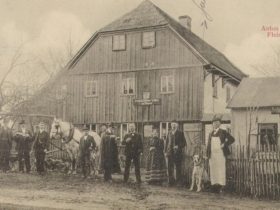On Good Friday, do not work with clay under any circumstances. The pre-Easter week is full of forgotten customs…
Easter is the most important Christian holiday. Modern times have buried many unique traditions, so let’s look at the most interesting ones.
First, we should explain why Easter is celebrated on a different day every year. Easter is one of the movable feasts that is governed by astronomical events. Two pieces of information are essential for determining the date of Easter – the vernal equinox and the full moon.
The vernal equinox comes with iron regularity on March 21, with a few notable exceptions. The full moon enchants us every 28 days. Easter has been set for centuries as the first Sunday after the first full moon after the vernal equinox. Everything is aimed at Sunday because, according to the Bible, Christ’s Resurrection occurred on Sunday. However, Easter is celebrated the following week if the full moon falls on a Sunday.
This way of determining the date of Easter was established in 325 by the First Council of Nicaea, so we have known when to celebrate Easter for almost 1,700 years.
It’s all because of the Moon
This year, the full moon will occur on Thursday, April 6, at 6:34 a.m. Therefore, the Christian world can look forward to their most significant holiday the following weekend. However, the so-called Holy Easter Week begins on Palm Sunday. And that is celebrated a week before Easter Sunday, so this year, it will be on April 2.
Palm (or Red) Sunday is a holiday commemorating the triumphant entry of Jesus into Jerusalem. Everyone waved palm branches, so palm leaves are the main attribute of this holiday. However, in our conditions, it was not so easy to come across palms in the past, so branches of trees from the given vegetation zone began to be worshipped.
These are often branches of willow ivy, i.e., fluffy catkins. They are blessed in the church and hidden in households throughout the year until the next Lenten period when they are ritually burned and are a symbol of Ash Wednesday of the following year.
No work on Monday
The following two days are the least significant days of Holy Easter Week. It is Blue Monday, which was sometimes called Yellow and Gray Tuesday. On Blue Monday (this year, April 3), it was forbidden to work, and churches were decorated with blue fabric.
On Gray Tuesday (this year, April 4), gray cobwebs were swept out of households, and there was extensive cleaning in cottages.
On Wednesday, smile
Wednesday (this year, April 5) is called the Ugly or Trashy Wednesday, also known as the Black, Cloudy, or Sooty Wednesday, because Judas frowned at Jesus on this day. Therefore, a traditional pastry called “Judas” should be baked in households.
According to beliefs, people should smile on this day because otherwise, they will frown at each other on all subsequent Wednesdays in the following year. All chimneys and stoves were swept in every household. It was necessary to get rid of the old dirt and look forward to spring. At the same time, sweeping the chimneys was believed to drive away evil spirits.
Bells head to the Eternal City
The following day is Green Thursday (this year, April 6). In the morning, people eat “Judas” with honey baked on Wednesday. Otherwise, only green food should be on the table today – cabbage, spinach, lettuce, and nettles. This gives a person strength and health. On Green Thursday, the bells ring for the last time in the old liturgical year.
Legends say the bells fly to Rome to take on the new pope’s mission. The oldest Czech bells fly first, followed by the most minor and most recent, which do not yet know the way and could get lost. However, the two most famous Czech bells – the Zikmund bell from St. Vitus Cathedral and the Marie bell from Týn Cathedral – close the entire flight. They watch whether any bell got lost on the way to Rome.
The legend says that the bell that does not fly to Rome will bring disaster to the village or town. Today we understand it more as no bell should ring in this period. Otherwise, it brings bad luck. The bells will ring again only at midnight Saturday service. Until then, boys with rattles, clappers, or jesters call people to the service.
The day Jesus was crucified
It happened on Good Friday (this year, April 7). It has been a public holiday in our country for the last few years. This day was always characterized by magic, mystery, and wonders. Mountains, rocks, and caves open and give wealth and treasures. No one should borrow anything on this day because the borrowed thing would be enchanted.
Under no circumstances could anyone work with clay on this day, so fieldwork, digging, sowing, or planting were prohibited. It was also forbidden to bury or even serve a funeral or requiem mass on this day. And homemakers were forbidden to wash clothes on this day. They soaked it in the blood of Christ. However, morning bathing in a well or stream was recommended. A naked person thus gained robust health and drove out all diseases. It is a beautiful custom but not very feasible in the city.
This was followed by White Saturday (this year, April 8)
It is the day when Christ’s body lies in the tomb. No masses are celebrated during the day. Traditionally, White Saturday is dedicated to baking Easter lambs and mazanec. From a church perspective, the culmination of White Saturday is the midnight service (vigil).
During it, the darkened churches and temples are illuminated again with candlelight. The bells return, ringing out and announcing to the countryside with their voice that the resurrection is approaching. Similarly, the organs ring out in the churches.
Easter candles are lit, but they must first be dipped in holy water. These are called Paschal candles with a cross symbol engraved, with the letters A and Ώ written. This signifies that Christ is the alpha and omega of life, literally, the first and last letters of everything.
On Sunday, you must wear something new
Easter Sunday (April 9) celebrates the resurrection, the Feast of Easter. People eat festive meals, and everyone should wear something new. Churches experience the most festive service of the whole year. People who are baptized during this service acquire exceptional properties. In some villages, horse riders in festive attire still ride out into the countryside to proclaim the news of Christ’s Resurrection and resurrection.
But that concludes the most important church holidays. Monday’s whipping is purely a secular holiday with nothing to do with the church.









